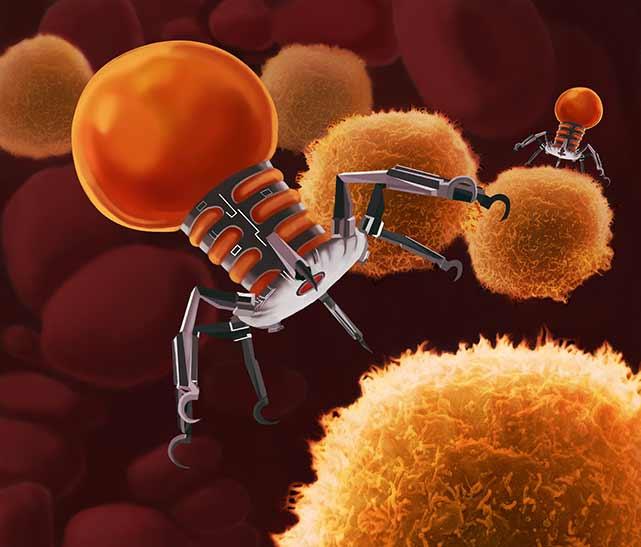Robots infinitely smaller than the naked eye can see. Everyday products improved by modifying them at the molecular level. While these concepts may seem highly futuristic, we are already benefiting from this technology – known as nanotechnology. And, continued innovation in this area is poised to take current advancements even further.
Nanotechnology is a combination of science, engineering and technology conducted at the nanoscale, which is extremely small; one nanometer is one-billionth of a meter. To give a sense of size, a sheet of paper is about 100,000 nanometers thick.
The American Society of Medical Engineers outlines ten ways nanotechnology is already positively impacting our lives, from creating faster, smarter computers to improving drug delivery to developing more stain-resistant, durable fabrics. While these are just a few examples, they demonstrate the progress of decades of research and development (R&D).
The future holds even more promise. Work that is currently underway, holds the potential to transform how we address some of our greatest challenges in important areas like health, the environment and infrastructure.
Learn about nanotechnology advances made possible through R&D:
Some recent examples of developments in nanotechnology show the breadth of the field’s potential:
- To address the growing problem of antibiotic resistance, MIT researchers show promising early-stage data for a targeted antimicrobial agent, housed in a nanoparticle, that dramatically reduced bacteria in infected lungs of mice.
- University of Michigan researchers devised the first technique to inexpensively grow nanoparticles on and below semiconductors, which can improve the efficiency of LED lighting by as much as 50 percent.
- Researchers have paved the way for less-invasive prenatal diagnostic testing by developing microchips that gather information from rare, fragile fetal cells, building on previous work targeting rare tumor cells.
These amazing advances are made possible through a strong intellectual property (IP) ecosystem that supports R&D and protects the innovators identifying breakthrough technologies. To continue the flow of new inventions, it is important to maintain and protect the IP rights that serve as the cornerstone of this ecosystem.


